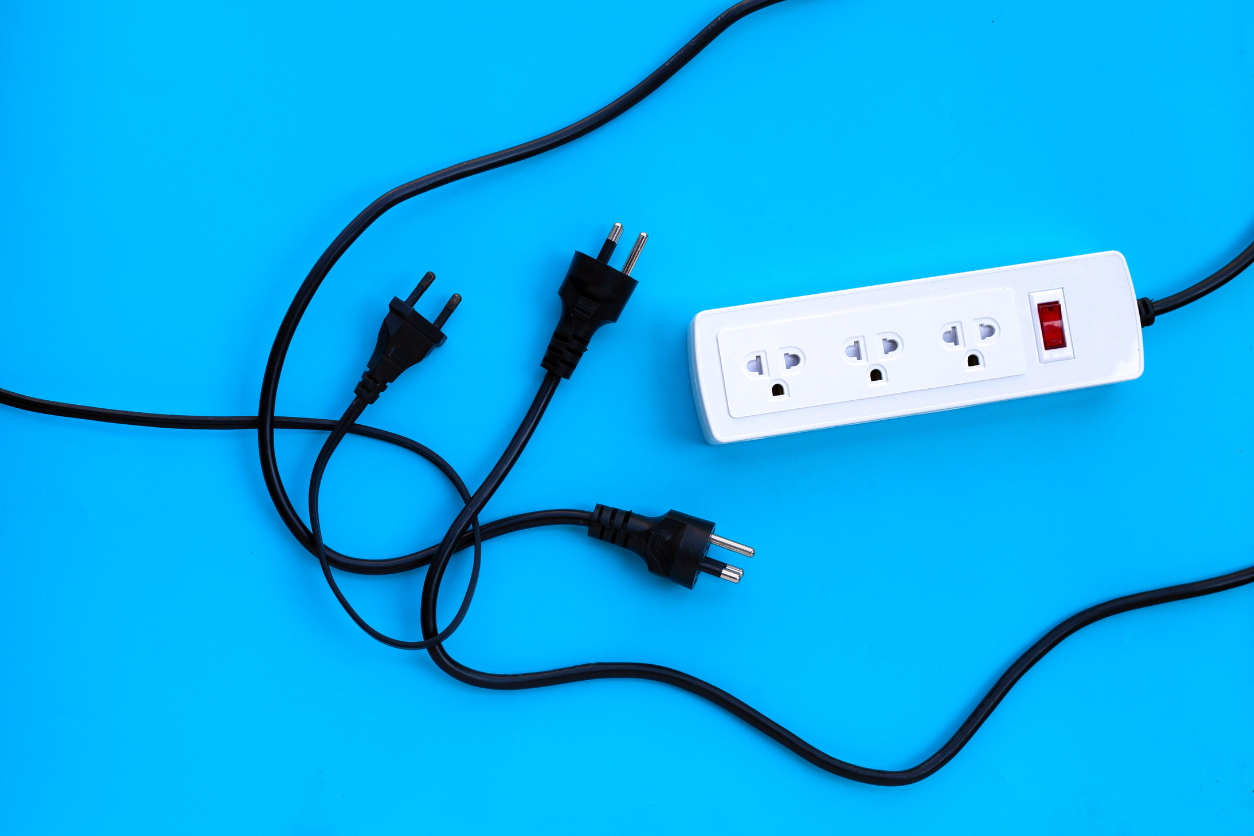Can You Plug an Extension Cord Into a Power Strip?

Have you ever needed just a few more feet of cord to plug in that new lamp, but the nearest outlet is a sea of charging cables and power supplies? Or maybe you’ve just installed your ultimate home theater system, only to realize that you need to plug in your TV, speakers, streaming device, and gaming console, but you’re one outlet short. In desperate times like these, you may consider connecting an extension cord to a power strip.
But can you safely plug an extension cord into a power strip? This is a crucial question, as mishandling of electrical equipment can lead to dangerous situations such as fires or electrical shocks. In this article, we’ll explore the answer to this question and provide tips to help you safely navigate the sometimes complex landscape of electrical setups in your home or office. We’ll also discuss the safety measures to consider when dealing with multiple power devices.
Safety Concerns
While it may seem convenient to plug an indoor or outdoor extension cord into a power strip to increase the number of available outlets, there are several safety concerns to consider.
One of the main risks is overloading the power strip. Power strips have a maximum load capacity, the total amount of power they can safely handle. Plugging too many devices into the power strip or connecting devices that draw a high amount of power can exceed this capacity, leading to overheating and potentially causing a fire.
Additionally, plugging an extension cord into a power strip can increase the risk of a fire hazard. Extension cords are specifically designed for temporary use and may not have the same safety features as power strips. They can easily become damaged or frayed, which increases the risk of electrical arcing and sparking.
Another concern is the potential for equipment damage. If too much power gets drawn through the power strip and extension cord, it can cause the devices plugged into them to malfunction or become damaged.
Electrical Codes and Regulations
To ensure the safety of electrical installations, specific codes and regulations are in place regarding the use of extension cords and power strips.
In the United States, the National Electrical Code (NEC) provides guidelines for the safe installation and use of electrical equipment. According to the NEC, extension cords should only serve as temporary wiring, not as a substitute for permanent wiring. The manufacturer’s instructions should also warn against daisy-chaining or plugging extension cords into one another.
Internationally, some electrical standards and regulations govern the use of power strips and extension cords. These standards may vary from country to country, but they generally emphasize the importance of using these devices safely and for their intended purpose.
How to Prevent Overloading
To prevent overloading a power strip or extension cord, it’s important to understand the load capacity of each device and use it safely.
Load calculation involves determining the total power consumption of the devices that you will plug into the power strip or extension cord. Each device should have a power rating, usually found on the device itself or in the user manual. By adding up the power ratings of all the devices, you can determine whether the total load exceeds the capacity of the power strip or extension cord.
Safely using extension cords and power strips includes avoiding daisy-chaining (plugging one power strip into another) and not exceeding the load capacity. Inspecting the cords and plugs for any damage or fraying before use is important, as damaged cords can increase the risk of electrical hazards.
Alternative Options
If you need additional outlets or a longer reach, there are alternatives to plugging an extension cord into a power strip.
Surge protectors are power strips that protect against power surges, which can damage electronic devices. They have built-in surge protection capabilities and can be safely used to connect multiple devices.
Multi-outlet extension cords are longer ones with multiple outlets along their length. These can be convenient when powering multiple devices in a specific area.
If you require a more permanent or complex electrical setup, it may be best to hire a professional electrician. They can assess your needs and install additional outlets or wiring to ensure a safe and efficient electrical system.
Summing Up
By following these tips and using power strips and extension cords safely and responsibly, you can minimize the risk of electrical hazards and ensure the proper functioning of your electrical devices. Remember, safety should always be a priority when dealing with electricity.